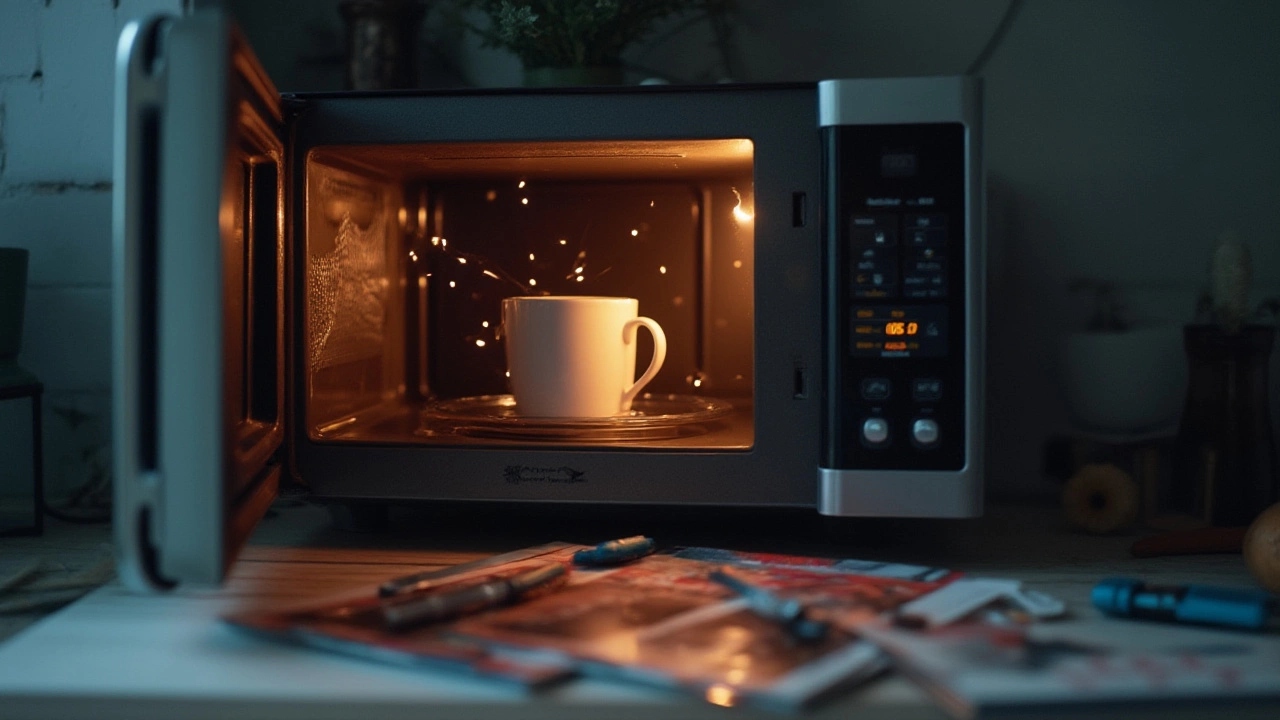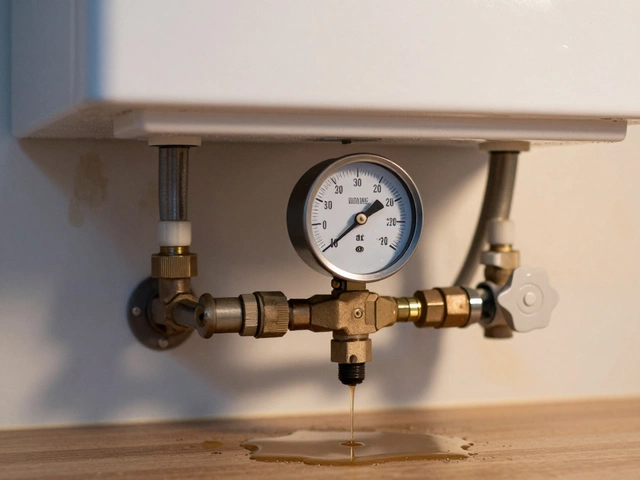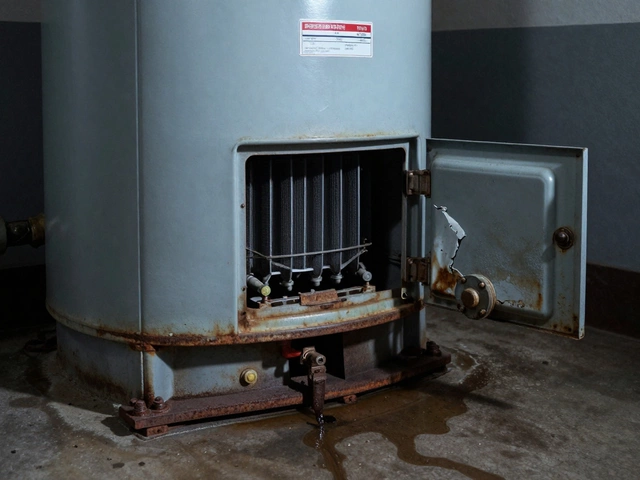It’s lunchtime in Wellington, you’ve just set your leftover lasagna spinning in the microwave, but ten minutes later it’s still as cold as the Antarctic wind blowing outside your window. If your microwave suddenly can’t do the one job it’s built for—making food hot—you’re staring at the classic sign of magnetron trouble. The magnetron is the heart of any microwave, blasting out the microwaves that heat up your food. When it goes bad, weird things start to happen that turn meal prep into a guessing game. If you’ve got a flat, silent box where your kitchen wizard used to be, keep reading. You might be living with a dying magnetron without even knowing it.
The Classic Clues Your Magnetron Is On the Way Out
Think your microwave is starting to act haunted? Most folks overlook the early warnings of a bad magnetron. It’s more than just a random ‘microwave not heating’ problem. One of the most reliable telltale signs is when your microwave runs exactly like normal—lights are on, turntable’s spinning, it sounds like it’s working—except your food’s as cold as when it went in. That’s because the magnetron is the thing actually making microwaves, so when it checks out, all you’re left with is theatre.
Magnetron symptoms can show up as strange noises you never heard before. Instead of the comforting hum, you might hear a loud buzzing, rattling, or even a sizzling sound. Some microwaves may give a faint burning odour—nasty, right?—when the magnetron is about to die. A few unlucky users have seen smoke, sparks, or the trippy sight of arcing inside the cavity (like lightning bolts). This is a Russian roulette you really don’t want to play. If you see sparks, unplug that thing. Fast.
Ever notice your food comes out unevenly heated, or only warm around the edges? Sometimes a weak magnetron tries its best but just can’t blast at full power anymore. People often think this is just their microwave being old, but it’s a red flag. Here’s one tip: try microwaving a mug of water. If it comes out barely warm and your machine’s working like usual, you’ve got a suspect.
Strange timer behavior is another sign. Occasionally, a broken magnetron will make the microwave shut off after a few seconds or won’t even start. Other times, fuses keep blowing. Don’t keep swapping them—your microwave is telling you something deeper is wrong.
There are a few other unusual symptoms. The digital display might flash error codes, or you might find your kitchen breaker tripping more than usual. You might not associate those with a faulty magnetron at first. A fun little fact: magnetrons are meant to last about 1,500–2,000 hours, which translates to maybe 9–11 years for most homes, but cheap models or heavy use (midnight snacks, anyone?) wear them out faster.
Here’s a quick hit-list if you need a refresher:
- Food not heating but microwave looks like it’s working
- Loud buzzing or humming noise that’s new
- Odd burning smells while microwaving
- Sparks or arcing in the oven
- Uneven heating or cool spots in food
- Microwave shuts off early or won’t start at all
- Blown fuses that keep coming back
- Display errors or circuit trips
Ever run into these? Don’t ignore them or rely on microwave myths (“Maybe if I spin the plate backwards…”). Magnetron issues don’t fix themselves.

Why Magnetrons Fail: Causes and Important Tips
The magnetron isn’t some magical black box; it’s actually a carefully engineered vacuum tube with a cathode and anode that blasts out microwaves when high voltage is applied. What burns them out? The big one is running the microwave empty. No food, no water, just an echo chamber for the waves—that overheats the magnetron faster than you can say “popcorn.”
Putting metal in the microwave is another classic move that stresses the magnetron. Those pretty gold-trimmed mugs or the odd fork someone forgot inside? They bounce microwaves around and can make the magnetron arc, drastically shortening its life. Even manufacturers warn about this in every little manual, but nobody reads those, right?
If you see a lot of spilled food or grease built up inside the oven, you’re asking for trouble. Grease blocks the waves and causes the magnetron to work overtime, heating stuff that shouldn’t be there. I’ve seen perfectly good machines killed early just because people never gave them a quick wipe-out after making bacon, curry, or buttery popcorn. Pro tip: keep it clean and you extend its lifespan.
Heavy use can also do it. Maybe you have teenagers reheating pizza all evening, or your office microwave works overtime for 20 people. More use equals more wear and tear. Some microwaves also use lower-quality parts that can’t take Wellington’s humid air or the salty breeze if you’re near the sea (guilty). Salt can corrode magnetron connections and wind up causing shorts or blown diodes.
Power surges or brownouts (short dips in voltage) are bad news for microwaves, especially older ones with sensitive electronics. After a blackout or big storm, test your microwave carefully before asking it to reheat a family-sized casserole. Some makers do include fuses or a surge-protective device inside, but even then, repeated hits can stress the magnetron or the transformer that feeds it.
Speaking of transformers—if they’re bad, they sometimes get blamed for issues that are actually rooted in the magnetron. Same for door switches. If those switches don’t engage fully, the magnetron can’t run right, which is why repair techs always check them first. But if everything else checks out and it still won’t heat, the magnetron is probably the prime suspect.
Here’s something most people don’t know: magnetrons aren’t universal, even between models of the same brand. Swapping out for a different model can sometimes work, but getting the exact part is safest. Modern microwaves won’t let you open them without the right security Torx screwdriver, but if you’re determined, watch out for that capacitor inside. It can hold a nasty charge, even when unplugged, and give you a zap you won’t forget. Not joking—professional techs use special tools and insulated gloves for this reason alone.
Before you call in the cavalry, check the basics first. Play around with different power levels. Test on a full mug of water rather than a tiny cup of milk. Listen for new sounds. Smell while it’s running. If you’re seeing multiple symptoms from above, your magnetron’s likely singing its swan song.
Here’s a quick comparison table showing the lifespan and common issues by usage:
| Microwave Type | Expected Magnetron Life | Common Failure Cause | Replacement Cost (NZD) |
|---|---|---|---|
| Standard Home | 9–11 years | Overuse/Empty running | $120-$250 |
| Office Use | 5–8 years | Heavy use/Dirty cavity | $160-$280 |
| Commercial | 4–6 years | Power surges | $200-$350 |
Notice how cost and lifespan change based on how rough you are on your gear.

When to Repair, Replace, or Call for Backup
If you’ve caught yourself nodding along with any of these symptoms, you’re probably wondering whether to break out the screwdriver or just save up for a new microwave. There’s no shame in calling in the pros if you’re not familiar with high-voltage repairs. Magnetron replacement usually falls outside the average DIY territory, mostly because of that stubborn high-voltage capacitor. Safety should always win over saving a few bucks.
A lot of microwaves nowadays are built so affordably that the magnetron replacement and labor end up costing about as much as a new model. If your machine is more than eight years old, or you’re looking at $150+ in repairs, it’s usually smarter just to upgrade. But if you have a higher-end or commercial-grade machine (some Sharp, Panasonic, or Breville models, for example), replacing the magnetron is still worth it. Some major manufacturers even used to give a five to ten-year magnetron warranty. If your microwave’s not ancient, check your paperwork; you might score a free fix.
Feeling adventurous? If you’re going to open the case, do your research. Discharge the capacitor first—there are plenty of step-by-step video guides for each major brand. Always unplug, don’t trust wall switches. Look for burning or black marks on the magnetron casing. A working magnetron will show strong continuity between its terminals and none to the chassis (test with a multimeter). If it fails that test, swap it out (and match part numbers as close as possible).
Want to avoid the problem in the future? Never run your microwave empty, keep the inside clean, and avoid microwaving things wrapped in foil or with metal trim. Plug it into a good surge protector if your house is prone to brownouts or power spikes. There are good, low-cost models out there—cheaper than replacing a blown magnetron every couple of years. And trust your senses: weird smells, noises, or flickering displays are always a red flag.
Microwaves haven’t changed much in the past 30 years—Panasonic is still making a turntable-free Inverter model, the Sharp Carousel is still chugging along, and every second home in New Zealand has a Breville on the bench. But the magnetron in every one of them works the same way. Spot the warning signs early, don’t ignore the cries for help, and you’ll never end up with a late-night dinner that’s stone cold in the middle. Good food deserves better.






